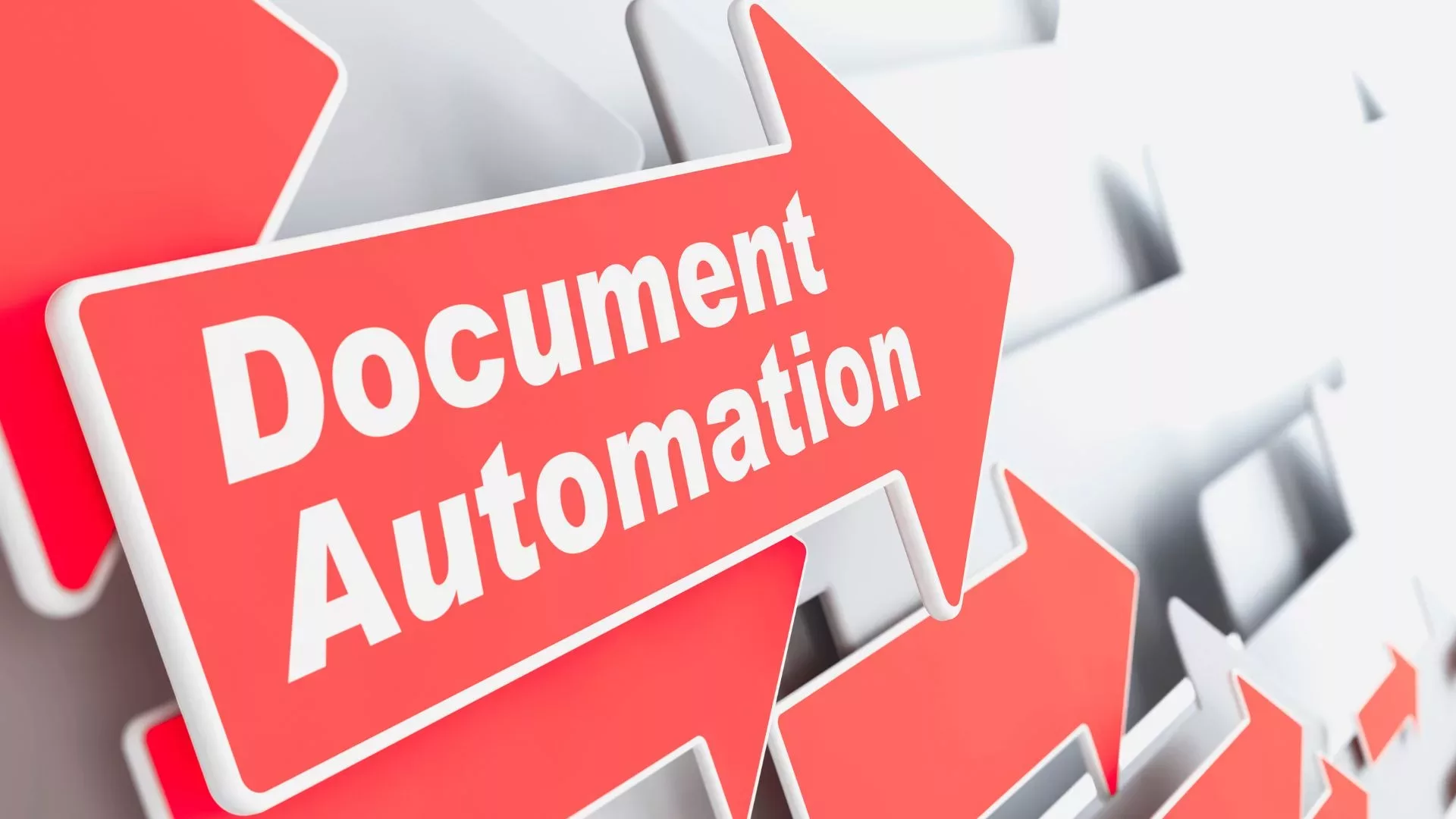
Key Points
- Automated Document Assembly: Harness predefined templates through legal document automation to generate legal documents accurately, consistently, and swiftly.
- Workflow Automation: Optimize the review, approval, and management of legal processes via legal document automation to boost efficiency and adhere to internal protocols.
- E-Signature Capabilities: Leverage legal document automation for secure and legally binding electronic signatures, expediting the signing process and ensuring document authenticity.
- Scalable Solutions: Choose legal document automation solutions that scale with your firm’s growth, meeting increasing demand without compromising performance.
Unveiling the Potential of Legal Document Automation
The advent of technology in the legal domain has opened avenues for improving efficiency, accuracy, and compliance. Legal Document Automation stands at the crux of this technological innovation, offering an array of benefits to legal professionals and entities. Let’s delve into the world of legal document automation and explore its myriad facets.
Legal Document Automation: Bridging the Technology-Law Gap
The concept of legal document automation encompasses the creation of legal documents through automated templates, minimizing the manual input required from legal professionals. It’s a blend of software and legal acumen that propels the swift creation and management of legal documents.
What is Legal Document Automation?
Legal Document Automation is the use of technology to automate the creation of legal documents based on a pre-defined set of rules. It converts manual document preparation into an automated process, helping save time, reduce errors, and ensure compliance with legal standards.
The Evolution of Legal Document Automation
Tracing back to its roots, legal document automation was a modest concept aimed at reducing the mundane tasks of legal professionals. Over time, with advancements in technology, it has evolved into a sophisticated tool, integral for modern legal practices.
Advantages of Legal Document Automation
Embracing legal document automation comes with a gamut of advantages that significantly impact the efficiency and effectiveness of legal processes.
Time and Cost Efficiency
Automating the document creation process dramatically cuts down the time spent on drafting documents. This time efficiency translates to cost savings, making legal services more accessible and affordable.
Error Minimization
Automation reduces the likelihood of errors that are common in manual document preparation. By ensuring accuracy, it enhances the credibility and reliability of legal documents.
Compliance Assurance
With built-in compliance checks, legal document automation tools ensure that the documents adhere to the prevailing legal standards and regulations, fostering a culture of compliance.
Components of Legal Document Automation
Delving into the core components of legal document automation unveils the intricacies of how this technology operates to enhance legal processes. Here are some of the key components that encapsulate the essence of legal document automation:
Document Assembly
One of the fundamental aspects of legal document automation is Document Assembly. This component facilitates the automatic generation of legal documents by utilizing predefined templates. Through a set of rules and logic, it populates these templates with the relevant data, ensuring that each document is crafted accurately and consistently. This not only streamlines the document creation process but also minimizes the chances of errors that may arise in manual drafting.
Workflow Automation
Workflow Automation is another crucial component that significantly contributes to the efficiency of legal processes. It automates the workflow associated with document review, approval, and management. By defining a clear workflow, legal entities can ensure that each document goes through the necessary steps of review and approval in a timely and organized manner. This automation accelerates the document lifecycle, ensures compliance with internal protocols, and enhances the overall efficiency of legal operations.
E-Signature Capabilities
In today’s digital age, the ability to sign documents electronically is a game-changer. E-Signature Capabilities in legal document automation allow for secure and legally binding electronic signatures on documents. This feature expedites the signing process, eliminates the need for physical presence, and provides a secure environment for document signing. Moreover, it ensures the authenticity and integrity of documents, making it an indispensable component of modern legal document automation systems.
These components collectively contribute to the robustness and efficiency of legal document automation, making it a powerful tool for legal professionals and entities aiming to modernize their operations and deliver superior service.
Implementing Legal Document Automation
Venturing into legal document automation requires a strategic approach to ensure its successful implementation and to reap the maximum benefits.
Assessing the Needs
Every legal entity has unique needs and requirements. Hence, an initial assessment is pivotal to identify the scope and extent of automation needed. This involves understanding the types of documents frequently used, the common legal procedures, and the existing manual processes that can be automated.
Choosing the Right Software
There’s an array of legal document automation software available in the market. Selecting the right one that aligns with your firm’s needs is crucial. Look for software that is easy to use, customizable, and comes with robust support and training resources.
Training and Adoption
Implementing a new system requires adequate training to ensure that everyone can use it effectively. Moreover, fostering a culture of adaptation among the staff is essential to overcome resistance to new technology.
Real-world Applications of Legal Document Automation
Legal document automation is not a theoretical concept but a practical tool that has been adopted across various sectors of the legal industry.
In Law Firms
Law firms are harnessing the power of legal document automation to streamline their document creation processes, manage contracts, and ensure compliance, thereby enhancing their service delivery and client satisfaction.
In Corporate Legal Departments
Corporate legal departments utilize legal document automation for contract management, corporate governance documents, and to ensure adherence to regulatory requirements with minimal manual intervention.
In Government Legal Bodies
Government legal entities leverage legal document automation to manage a plethora of legal documents, ensuring accuracy, compliance, and efficiency in public service delivery.
Legal Document Automation Tools
The market is replete with tools that aid in legal document automation, each with its unique features and capabilities.
Review of Top Tools
Exploring and reviewing the top legal document automation tools provides insights into their features, benefits, and how they cater to different legal automation needs.
Here are some legal document automation software and tools for attorneys along with the URLs for more information:
- Knackly: Ideal for power-users who value substance over style. Knackly Details1.
- Rally: Aimed at business firms looking to provide a best-in-class client experience. Rally Details1.
- DocAssemble: Perfect for open-source aficionados, legal aids, coders. DocAssemble Details1.
- Clio: Geared towards users comfortable with a complex template-building system. Clio Details1.
- Smokeball: Ideal for document-heavy law practices that need a practice management platform. Smokeball Details1.
- Lawyaw: Pricing varies from $70/month per user for Cloud-Based Court Forms to $150/hour for Template Services. Lawyaw Details2.
- AI Docs: Aids in transforming how attorneys and law firms create, manage, and electronically sign their important documents. Lawyaw Details3.
- LexWorkplace: A document & email management platform leveraging cloud sharing & storage benefits. LexWorkplace Details4.
Integrating with Existing Systems
Seamless integration with existing systems and software is a crucial aspect to look for in a legal document automation tool to ensure a smooth transition and operation.
Legal Document Automation and the Future
The horizon of legal document automation is expanding with continuous advancements in technology.
AI and Machine Learning
Artificial Intelligence (AI) and Machine Learning (ML) are spearheading the evolution of legal document automation, enabling smarter document analysis, and predictive analytics.
Predictive Analysis
Predictive analysis in legal document automation aids in foreseeing potential legal issues, thus allowing for proactive measures and informed decision-making.
Blockchain Technology
Blockchain technology promises enhanced security and transparency in legal document management, paving the way for more secure and efficient legal processes.
Challenges and Solutions in Legal Document Automation
Embarking on the journey of legal document automation may present a set of challenges, but with the right approach, these can be overcome to leverage the full potential of automation.
Data Security
One of the paramount concerns in legal document automation is the security of sensitive data. Employing robust encryption techniques and adhering to stringent data security standards can mitigate risks associated with data breaches.
Scalability
As legal firms grow, the automation system should be able to scale to meet the increasing demand. Opting for scalable solutions that can handle a growing volume of documents without compromising on performance is key.
Change Management
Transitioning from manual to automated processes can be a daunting task. Effective change management strategies, including training and support, can facilitate a smooth transition, ensuring staff are well-adapted to the new system.
Legal Document Automation: User Experiences
Understanding the real-world impact of legal document automation through user experiences can provide invaluable insights into its practical benefits and challenges.
Case Studies
Exploring case studies of legal entities that have successfully implemented legal document automation can provide a roadmap for others looking to embark on a similar journey.
Expert Opinions
Gleaning insights from experts in the field can shed light on the evolving trends in legal document automation and the best practices for successful implementation.
The Path Forward with Legal Document Automation
Legal document automation is more than a fleeting trend; it’s a substantial stride towards revolutionizing the way legal processes are conducted. By embracing automation, legal entities can significantly enhance efficiency, accuracy, and compliance, thereby delivering superior value to their clients.
Share this post
Frequently Asked Questions (FAQs)
Q: How Can Legal Document Automation Benefit My Organization?
A: Legal Document Automation can streamline document creation, ensure compliance, reduce errors, and save time and resources, thus enhancing the overall efficiency and productivity of your organization.
Q: What Are the Initial Costs Involved?
A: The initial costs may include the price of the software, implementation, and training. However, the long-term benefits such as time-saving and error reduction often outweigh the initial investment.
Q: How to Evaluate Legal Document Automation Tools?
A: Evaluate based on ease of use, customization options, integration capabilities with existing systems, and the level of support and training provided.
Q: What about Data Security?
A: Ensure the chosen solution adheres to high standards of data security, including robust encryption and compliance with relevant legal and industry standards.
Q: How Does Legal Document Automation Complement Legal Staff?
A: It frees up legal staff from mundane and repetitive tasks, allowing them to focus on more strategic, value-added activities.
Q: Can I Customize the Legal Document Automation Software?
A: Most legal document automation tools offer a degree of customization to cater to the specific needs and preferences of different legal entities.














